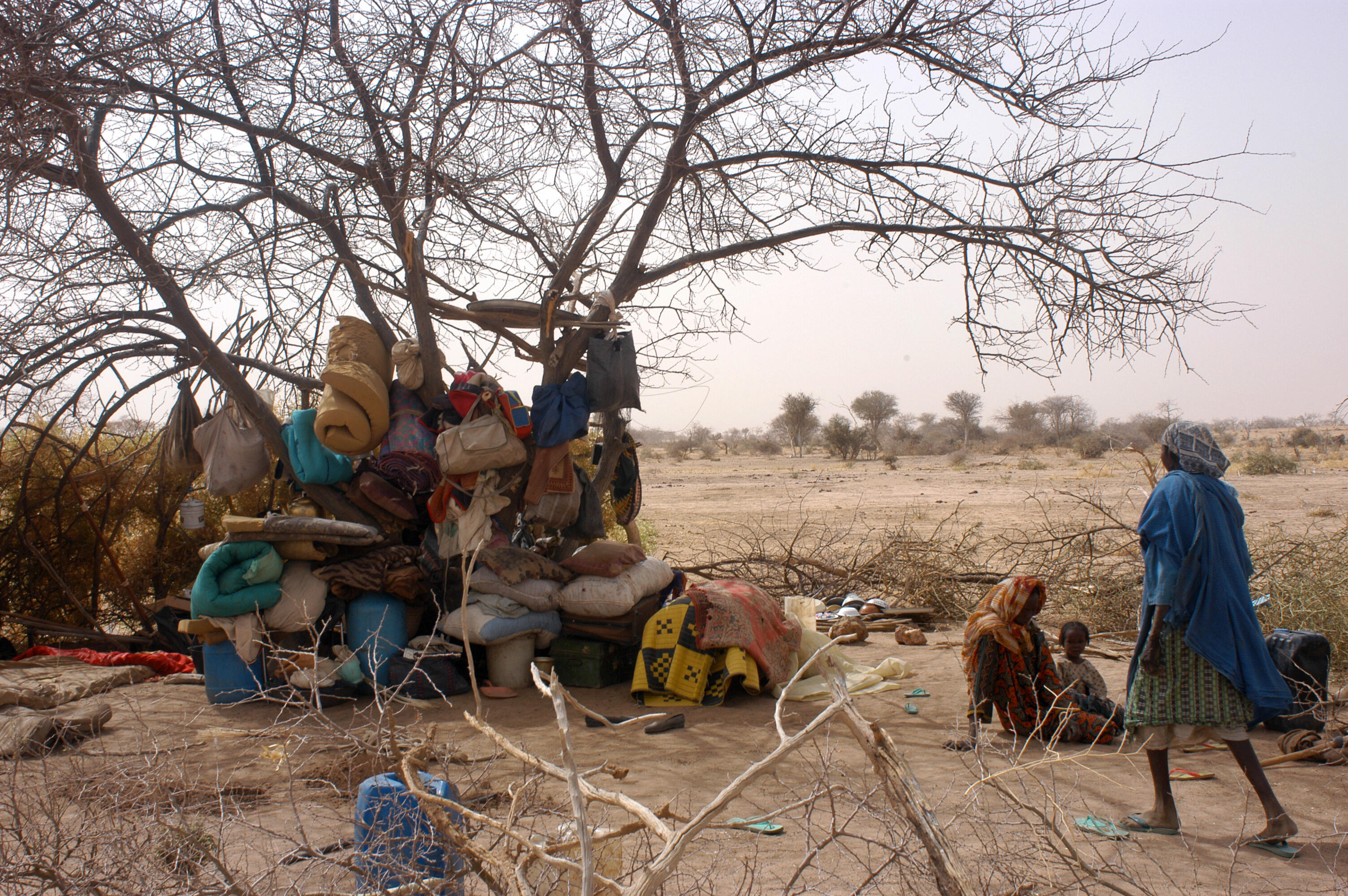Lesson plans for ages 9-11 in Civic Education: Refugee Children
Lesson plans for ages 9-11 in Civic Education: Refugee Children
-

Sudanese refugees who fled to Kourbileke, Chad from their village of Habila in Sudan following bombing in mid-January. Some of the refugees had time to take belongings such as mattresses and blankets with them when they fled.
LESSONS 2 and 3: Children's Rights
Purpose
These lessons are designed to help students differentiate between the things they want and the things they need. The children will be introduced to the idea that people's most basic needs are considered rights.
Preparation
Cut up enough small pieces of white cardboard so that there are 20 for each group of 5 students in the class, e.g. 120 cards for a class of 30. These will be called "Wants and Needs" cards.
Procedure
Arrange the students into groups of 5, telling them that they are each a family. Ask them to decide which two are going to be parents and which three will play the role of children. Give each family a blank set of 20 "Wants and Needs" cards.
Tell the students that a war has started and, as a family, they must flee to safety together. Since they must abandon their homes, they need to take all the things they need and want in order to live and grow at their new temporary home, when they find one. The family must decide on no more than 20 items to take, and write the names of each item onto the "Wants and Needs" cards.
Announce to the families that because of limited space in their transport cars, carts, and wheelbarrows, the students can only take 14 items instead of all 20. They need to decide on six items to eliminate. They should draw an X through all these.
Inform the students that the roads are too congested with other people who are fleeing and so their family cars cannot be used. Everyone will be walking, and to lighten the loads which are to be carried, they can only take six items with them, instead of 14. Have the children eliminate eight more items, leaving only the six that they consider most essential for their survival.
Stress that millions of refugee children have had to make such choices in real life.
Discussion questions
Which items were most commonly eliminated in the first round? Why? Was the second round of eliminations more difficult than the first? Why? Did you and your partner have any disagreements over the items to eliminate? Which ones, and why? What is the difference between wants and needs? Which items on the list were wants, and which ones were needs? Do wants and needs differ for different people? Why or why not? Remember the story of Jacob, the Sudanese refugee boy. What were they able to bring with them? Were their needs all met? What about their wants?
Explain to the children that: People's most basic needs - to survive, develop, be safe, and participate in their communities - are often referred to as rights. Rights can be thought of as those things that it is fair and just for all people to have, or to be able to do.


